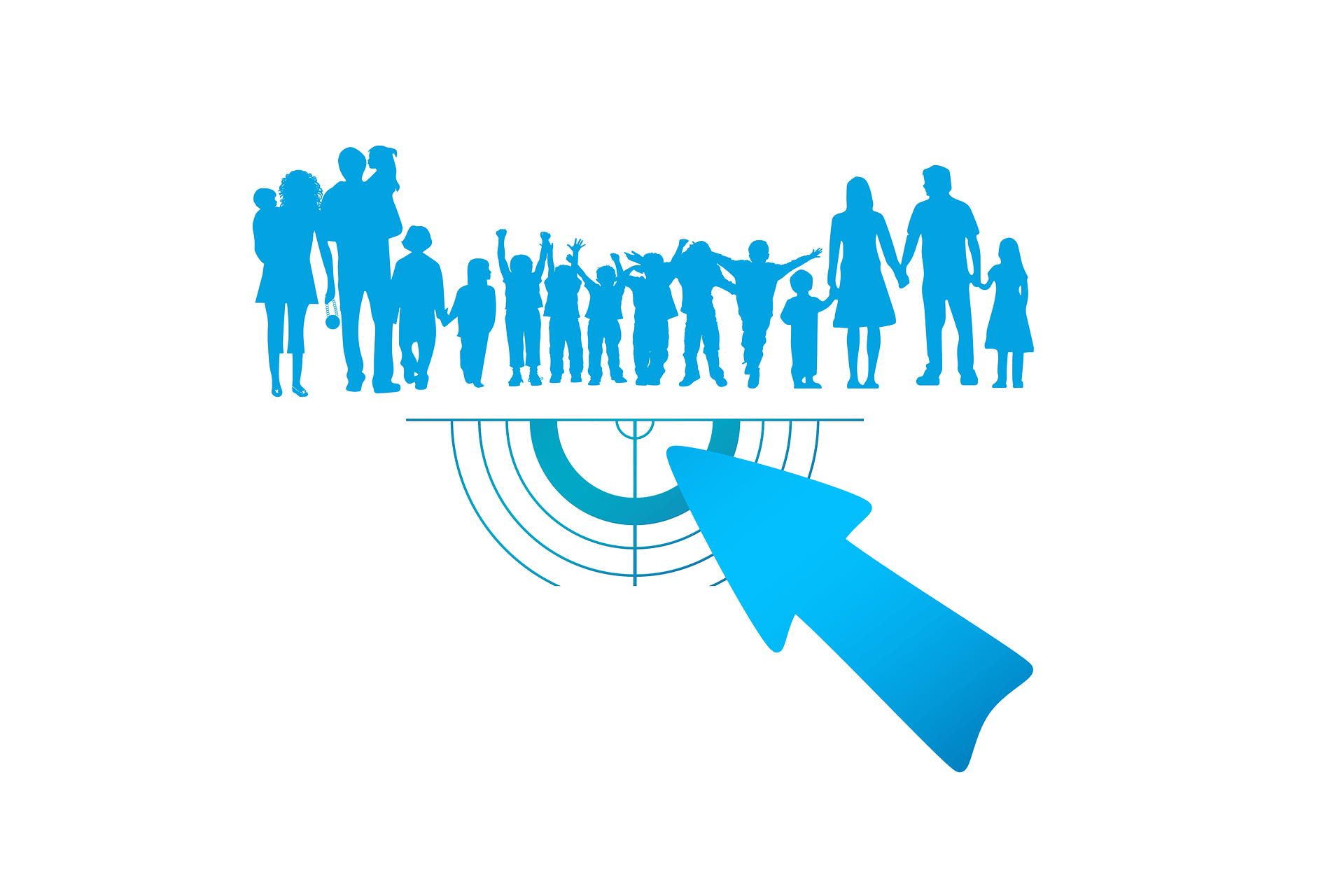Brand Development Research
A significant majority of brands and their employees think the best measure of brand development research is precision. As long as you get lots of survey results and accurate data, the research is deemed a success. But then…what do you do with it?
What defines good brand research is actually its applicability. The most exact insights in the world are no use to you if you don’t know how to apply them. Therefore, the importance of brand research isn’t the data itself, but what comes after the facts are gathered. Unfortunately for lots of brands, many research companies provide the study results and stop there. Their data is good, their research is sound—but it doesn’t lead to the desired results, because there is no interpretation to help marketers and decision-makers take action on the findings quickly and effectively.
Cascade Strategies is here to share our perspective on what good brand development research fully entails and the outcomes it could achieve for you.
What Is Brand Research?
Brand development research is the process and strategies used to identify how your brand is presenting itself to the world. You might assume you already know the answer to this question, but often, such assumptions are more grounded in how you want to be seen than feedback from your consumers.
Your brand is different to every individual who chooses to do business with you. Do you know what is driving their perception and, by proxy, their buying choices? And furthermore, do you know how to apply that understanding in a way that optimizes profitability? If you think you know, how do you know? Did you ask them? Actionable, data-backed insights are the purpose of true brand research.
If you’ve been in branding or marketing for a while, your understanding of brand research might have become conflated with brand research projects. It’s true that benchmarking your pricing or a new market study is research for your brand, but it isn’t research about your brand. True brand research is a deep and sometimes painful exploration. The purpose is to pinpoint how and why the messaging you need to convey isn’t being received by your target customers. There’s no one brand research template that will help you get there, but there are some characteristics that all brand development research has in common.
What Does Brand Research Include?
Brand development research includes hard work and creative, thoughtful analysis of findings to generate action steps for improvement. One survey or focus group is not brand research, though it may be a start.
There are many approaches to brand research, and the best brand research companies may use several to get to the heart of what is holding a brand back from higher profits and more satisfied customers.
Types of Brand Research
- Qualitative Research: Qualitative brand research, like focus groups and depth interviews, can produce incredible insights when conducted with the right approach. Cascade Strategies has developed a particular reputation for excellence in this area through a practice called Account Planning. Our deeper thinking and thoughtful analysis take the findings from qualitative research and use them to reveal how customers think AND feel about the brand. Understanding both the hearts and minds of your customers is essential to capture and keep their business.
- Quantitative Research: Quantitative brand research, like benchmark tracking and customer satisfaction measurement, provides hard numbers to confirm or challenge opinions about the brand. We are seasoned in all stages of this process, from designing the study to data collection, quality control, and findings reporting. It’s also essential to provide interpretive analysis and recommendations for the next best action as a result of the research findings. We bring creative thinking and fresh insight to go beyond the numbers and tell you how to achieve goals.
- Consumer Satisfaction Studies: Consumer satisfaction research helps your brand both define the ideal product or service for your customers, and measure how you are meeting, exceeding, or lagging behind these expectations. Our approach uses a Fast Retail Evaluation Device (FRED) to align your research design with the reality of customer behavior. Different personas are pleased by different things, and a consumer satisfaction study needs to allow for those unique preferences. In many cases, our research helps you understand what those preferences are and how to meet those needs.
- Segmentation Studies: Segmentation studies test a brand’s assumptions about the different sub-groups or personas within their general audience. This research reveals insights about how to communicate with each group in the most profitable way. We leverage our decades of experience to take this analysis one step further and translate the findings into actionable strategies. If desired, we can apply these findings all the way down to new creative briefs and advertising guidance. Our approach to segmentation studies makes applying research findings easy and effective for our customers.
- Ethnographic Research: Ethnographic research helps brands avoid conditions of bias created because they are gathering information within their comfort zone. This approach takes research directly to customers and meets them where they are to gather information within their context. When we are contracted to perform this type of research, we start with a comprehensive literature review and historiography, including the brand’s own research about audience personas and information from our library and third parties. During the field research, results are continually documented and uploaded so no gems of insight are lost. A midpoint meeting helps keep the project on track with its goals, while the final report includes recommendations across all relevant programmatic and functional areas for improvement.
- Ideation and Synectics: Ideation and synectics are brainstorming, but rooted in the notion that the real meaning of the session is deeper than the words being shared. Our ideation process starts with internal and external interviews, speaking to both employees and customers of the brand. We then use the key learnings from these discussions to guide the ideation session and emerge with a new, more effective way to attract customers to your brand. This new plan is rooted in not only the conclusions drawn from the session, but also the process by which participants arrived at those conclusions.
What unites all these types of brand research is the time and intentionality with which they are conducted. Impactful brand development research requires patience, vulnerability, experience, perspective, and a combination of analytical and creative thinking.
How Is Brand Research Done?
Brand development research is not much different from other forms of research at its core, meaning it benefits from a strong grounding in the scientific method.
- Brands start the process with conjecture and a set of beliefs ready to be tested. They may even come to the table with predefined expectations and explanations (hypotheses) for why their audiences and buyer personas behave as they do.
- The experiments which follow gather data to prove or disprove these theories, and this is where many brand research firms stop.
- Cascade Strategies believes that brand research should be completed in full, concluding with interpretive analysis and reporting as well as recommendations for how to apply the findings or build on them in future studies.
Historically, marketers have conducted brand research through experiments like focus groups, surveys, and depth interviews. In addition to these and other tried-and-tested methods, we are excited to leverage cutting-edge scientific approaches. These include predictive analytics, deep learning, neuroscience, biometrics, eye tracking, virtual reality, and gamification. A full suite of approaches helps our clients make the most of their investments in brand research, resulting in faster and higher ROI thanks to our analysis and perspective.
Who does brand research?
A large variety of companies conduct brand research, including manufacturers, retailers, financial services companies, health care companies, and more. Packaged goods companies in particular are heavy users of brand research. These include companies like P&G, Nestle, PepsiCo, Unilever, and others. Please see our treatment of recent trends in the packaged-goods industry and how enlightened market research companies have responded.
4 Brand Development Strategies With Examples of Research
Here are four hypothetical brand research examples. Bear in mind these scenarios and companies are not real-world examples. We drew from our project experience to create them, but your own project or experience may require a different approach or yield distinct outcomes.
1. Researching an Internal Brand to Gain Employee Buy-In
A communications company is aware that they have a problem with employee morale, which is leading to low productivity and high turnover. Leadership has attempted to hold internal focus groups, but aren’t getting the authentic feedback they need to implement meaningful change. They contract with Cascade Strategies to carry out internal brand development research, including Account Planning. This approach is a better pathway to get to what employees are feeling about the company, not just thinking about it.
From the beginning of the process, it is clear to employees that this will not be the same tired conversation. Pre-work for the focus groups includes bringing in a meme they think describes the current company culture in one image. This is unorthodox, but allows employees to express their perceptions without needing to put their feelings into words. Instead, these images are a starting point for authentic discussion about the best and worst of the work environment. The experienced facilitator from Cascade Strategies is able to draw additional conclusions from the tone, body language, and demeanor of the participants.
There’s a lot learned from the focus groups, but presenting the findings to company leadership requires analysis. By dividing the employees into four “audiences,” Cascade Strategies can demonstrate what differentiates the most loyal employees from those who dread coming to work each day, as well as allow for the workers between these two extremes. The report includes action steps to translate the buy-in from loyal employees to their peers, and to make those who are dissatisfied heard and address their issues. Putting these ideas into action, the company can slow the tide of turnover and make a pivot toward profitability.
2. Refreshing a Business Plan for Explosive Growth
A B2B SaaS startup is planning to seek a new round of venture funding, but leadership is aware the business plan needs a refresh before they present it to investors. Their product has evolved through user feedback, and they aren’t certain if their audience segmentation is still accurate either. They contract with Cascade Strategies to apply The BrandView™ Model to their company, seeking an overall assessment of their brand health and how it can be improved. They choose this approach because they know it entails a number of tough questions that will evaluate their market fit, distinction from competitors, growth potential, and more.
The process starts with an assessment of the utility of their software: why do people use it, what products does it replace, and how much are people willing to pay for it? Next is research about the distinctions in the market. Are there competitors with similar products, and how is this SaaS platform differentiated? Does that distinction actually seem meaningful to customers? This exploration naturally flows into an examination of user preferences, including not only why they prefer the product but also why they prefer the brand. Last comes awareness research about the visual and marketing assets of the startup, as well as a candid assessment of the business’s viability.
The findings from this brand development research help the startup develop a new mission and vision statement as well as revise its business plan. Their new confidence in the company’s direction and market share potential carry over to investors, who are also happy to see the self-reflection and adaptability represented by the work with Cascade Strategies.
3. Segmentation Studies to Drive Imaginative Brand Development
An eCommerce retailer wants to better leverage its email and social media marketing to attract repeat customers. But they can’t identify what beliefs and opinions are holding buyers back from making a repeat purchase. Is it a matter of price? Quality? Is the buying cycle for their consumers longer than they thought? With so many variables in question, rather than making assumptions they contract with Cascade Strategies to perform a segmentation study. This research will reveal the different sub-groups within their audience and either confirm or refute their buyer personas.
Cascade Strategies takes a high-level look at the available data and recommends an attitudinal segmentation study. All other demographics aside, an attitudinal segmentation study has the most relevance and value: what is really important is the beliefs and values customers are bringing to the transaction. Research can expose how and why those characteristics might hold them back from a repeat purchase, and the impact of that phenomenon on the brand. To conduct the study, we carry out research through phone and web surveys, customer interviews, and even analysis of past reviews or customer feedback.
As a result of this analysis, three audience segments are identified. Vivid portraits of each segment called personas are developed to help the company understand how to persuasively appeal to each one. Some customers are highly loyal and only purchase from this eCommerce brand. Others prefer the brand, but will buy from a competitor when there is a sale or other offer. And the third group only purchased from the retailer when a promotion was offered…and are not willing to pay full price. To extract the most value from this understanding, Cascade Strategies demonstrates how demographic data like age, income, and geography play into the different groups. This allows the retailer to create two different marketing strategies, one to affirm the loyalty of their best customers and another to nurture the same beliefs in their less-loyal followers. The resulting marketing mix is not only more creative, but also more effective and profitable.
4. Cutting-Edge Research Technology to Evaluate Brand Identity Elements
A food manufacturer is rebranding their product to meet new consumer expectations. But they aren’t certain what logo and package design will really stand out in the grocery aisle and achieve their goals. Rather than go to the effort of creating multiple prototypes in the physical world, they contract with Cascade Strategies to leverage advanced research methodology and technology.
Cascade Strategies designs a virtual grocery store where study participants can browse and purchase to their hearts’ content. Users can pick up packages from the aisles, examine them in a 360 view, and even put them back if they aren’t sold on the product. As they move through the environment, respondents can be prompted to answer questions or agree to a free trial of a product they will receive in the mail. Once they “pick up” a product in virtual reality, eye tracking technology can reveal which parts of the package they focus on, and if some logos or information is catching their attention more than others. Cascade Strategies even has experience interpreting biometrics like heart rate and galvanic skin response to uncover involuntary reactions, both good and bad.
When this immersive, cutting-edge research experience is complete, the food manufacturer is provided with easy-to-understand reports and analysis to guide their decision about the rebrand. This goes beyond the simple numbers and data to include an analysis of why certain products have more appeal than others, and also what this might signify about the brand’s customers as a whole. What’s more, the process has also created excited customers who can’t wait to find and try these products in real-life! Respondents’ experience of brand development research can be a positive one that increases their respect for and loyalty toward your brand—when you work with the right partner.
Cascade Strategies Gives Brand Research Meaning
Since our founding in 1991, Cascade Strategies has proven a mighty global force, conducting brand development research for a veritable honor roll of brands and institutions. From the Fortune 50 to small businesses, we serve any organization that wants research both done well and translated well. We ask innovative questions and structure unexpected experiments that get to the heart of the information you need while also delighting your participants. But collecting and classifying the data to answer your questions is just half of the work. We also provide the reporting that makes it easy to apply research findings to the everyday decisions that drive success for your company.
If you’re ready to enter a meaningful conversation about the gaps in your knowledge about your brand, we are here to listen and to help. Call us at (425) 677-7430, or email cascade@cascadestrategies.com. We’ll get back to you quickly!

Tell us how we can help you
Cascade Strategies can serve your market research needs from the most straightforward to the most sophisticated project. Don’t hesitate to contact us to tell us about your next project, or your overall research needs in general. You can call (425) 677-7430 and ask for Jerry, Nestor, or Ernie. Or send us an email at info@cascadestrategies.com. We’ll get back to you quickly!
subscribe




